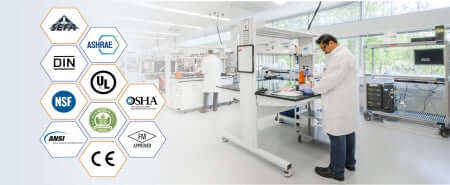Categories
- 10 Best Bod Incubator in 2024
- 10 Best compound microscopes in 2024
- 10 Best Lab chemicals in 2024
- 10 Best Lab equipment suppliers in 2024
- 10 Best lab microscopes in 2024
- 10 Best Microbiology Lab Equipment in 2024
- 10 Best Refrigerator Mortuary Freezer in India
- 10 Best student microscopes In 2024 Lowest Price
- 10 Best vertical autoclaves in 2024
- Accessories
- Aerospace Engineering lab Equipment
- Agriculture College Lab Equipment Suppliers
- agriculture Lab Equipment
- Agronomy Lab Equipment
- analytical lab Equipment
- Anatomy lab equipment
- Animal House lab Equipment
- AUTOMOBILE LAB
- Ayurvedic college lab equipment manufacturers and suppliers
- ayurvedic drug testing laboratory
- ayurvedic pharmacy instruments
- B pharmacy Equipments suppliers
- B. D. Instrumentation (India)
- Best Microscope for students in India
- Binocular Microscope
- Biochemistry lab equipment
- Biological Lab Equipment
- Biological Sciences lab Equipment
- Biology Lab Equipment
- Biomedical Engineering Lab Equipment
- Biophysics lab equipment
- Biostatistics Lab Equipment
- Biotechnology
- Biotechnology lab equipment
- Biotechnology lab equipment
- Borolab Scientific Glass Pvt. Ltd.
- Botany Lab Product
- BOTANY PERMANENT MICRO-PREPARED SLIDES
- CAD LAB
- Cardiology Lab Equipment
- Central Drug House (P) Ltd - CDH
- CENTRAL WORKSHOP
- Centre for Community Medicine lab equipment
- Centrifuge machine
- centrifuge machine suppliers in india
- Chemical Engineering Equipment
- Chemistry equipment
- Chemistry Lab Apparatus
- Chromatography Apparatus
- Civil Engineering
- Clean Air Equipment
- College of Nursing Lab Equipment
- D Pharmacy equipment
- Dairy lab instrument
- dental autoclave price
- Dental Equipment
- Department Of Anatomy Lab Equipment
- DEPARTMENT OF P'CEUTICAL CHEMISTRY Equipment
- DEPARTMENT OF P'CEUTICS Equipment
- DEPARTMENT OF PHARMACOGNOSY Equipment
- DEPARTMENT OF PHARMACOLOGY Equipment
- Diffusion Cell Apparatus
- Digital Centrifuge Machine
- Distillation apparatus
- Do meter
- DYNAMICS OF MACHINES LAB
- EDM LAB equipment
- Endocrinology, Metabolism & Diabetes Lab Equipment
- Engineering Institute laboratory Equipment
- Engineering Laboratory Equipment
- ENT AND OPHTHALMIC
- Entomology Lab equipment
- equipment for laboratory
- Flash Point Apparatus
- FLUID MECHANICS AND MACHINERY FLUID LAB
- FMS LAB
- Gastroenterology and Human Nutrition
- General Laboratory Equipment
- General Laboratory Equipment
- Genetics and Plant Breeding lab Equipment
- Genetics and Plant Breeding lab Equipment
- Haematology Lab Equipment
- Handi Centrifuge Machine
- Heart Models
- HEAT & MASS TRANSFER LAB
- Heating & Cooling Products
- herbal testing laboratory
- High-Quality Laboratory Equipment - Glomax Manufacturer
- Hospital equipment
- Hospital equipment supplier near me
- Human Body Part Models
- Human Skeleton Model White PVC Plastic
- I.C. ENGINE LAB
- Industrial & Soil Equipment
- Kashmir Surgical Works
- Knee Joint Model
- Lab Chemical
- lab equipment
- Lab Fabric items
- lab plasticware
- lab water bath
- Laboratory Centrifuge
- Laboratory Consumables
- Laboratory equipment
- laboratory equipment
- Laboratory equipment manufacturers and suppliers
- Laboratory equipment suppliers in ambala cantt
- Laboratory equipment suppliers in Delhi
- Laboratory equipment suppliers in India
- Laboratory Equipment Suppliers in Jaipur
- Laboratory glassware & Chemical Items
- laboratory instruments manufacturers in ambala cantt
- Labpro banner
- Labpro Banner 60%
- Labpro international
- Live Stock & Production Management lab Equipment
- Livestock & Production Management
- MATERIAL SCIENCE LAB
- MEASUREMENT & METROLOGY LAB
- measuring tools
- Mechanical Engineering
- Medical laboratory equipment suppliers
- medical mannequin
- medical products
- Mega Offers
- Melting Point Apparatus
- Metrological Lab Equipment
- Microbiological Diagnostic Equipment
- Microbiology & Pharmacology Laboratory Equipment
- Microbiology laboratory equipment
- Microcentrifuge
- Micrometer
- Micropipettes
- microscopes
- Milk Testing Equipment
- mushroom lab Equipment
- Nephrology lab equipment
- Nursing College Lab Equipment
- Nursing Department lab equipment
- Obstetrics and Gynaecology lab equipment
- Offer Zone
- Orthopaedics lab equipment
- OSAW INDUSTRIAL PRODUCTS PVT LTD
- Otorhinolaryngology lab equipment
- Paediatrics lab equipment
- Pathology lab equipment
- Pediatric lab equipment
- PERMANENT SLIDES
- pH meter -Top-Rated pH Meters for Research and Testing
- Pharma Analysis Laboratory Equipment
- Pharma Biology Laboratory Equipment
- PHARMACEUTICAL BIOTECHNOLOGY EQUIPMENT
- Pharmaceutical Chemistry Lab Equipment
- Pharmaceutical lab equipment & Research Lab Equipment
- Pharmaceutics Laboratory Equipment
- Pharmacognosy Laboratory Equipment
- Pharmacology lab equipment
- Pharmacy college lab equipment suppliers
- Pharmacy laboratories equipment
- Physical Pharmacy Lab equipment
- physics 60% Discount
- physics lab
- Physiology lab equipment
- Plant Pathology & Microbiology Lab
- product Offers 2024
- Profile Projectors
- Pusher Centrifuge
- RADICAL SCIENTIFIC EQUIPMENTS PVT LTD
- Refrigerated centrifuge machine manufacturers suppliers
- REFRIGERATION & AIR CONDITIONING LAB
- Reproductive Biology lab equipment
- Research Section lab equipment
- Rheumatology lab equipment
- Rheumatology lab equipment
- School And College University equipment
- School And College University Products
- school lab equipment manufacturers in india
- Science Laboratory Equipment
- Scifa Laboratory equipment lnc
- SCITECH SCIENTIFICS
- Seed Technology
- Seed Technology Lab Equipment
- Silica Gel
- Skull Models
- soil testing instruments
- soil testing lab equipment list
- Soxhlet Extraction Apparatus
- SPAN AUTOMATION
- STRENGTH OF MATERIALS LAB
- Table Top Centrifuge
- Testing Equipment
- Tiles Ceramic Laboratory Equipment
- Top manufacturers Laboratory fume hood in india
- types of mask
- Types of Microscopes
- Urology lab equipment
- Veterinary Sciences Lab Product
- Zoology Lab Equipment
Recent Articles
-
top 10 laboratory equipment manufacturers in India July 30, 2023
-
laboratory equipment manufacturers in Kolkata July 30, 2023
-
laboratory equipment manufacturers in india July 30, 2023
Tag Cloud
Top Sellers
laboratory equipment and their uses

When it comes to scientific research and experimentation, having the right lab equipment is crucial. Each piece of equipment serves a specific purpose and plays a vital role in the success of experiments. In this blog post, we will delve into the world of lab equipment and explore their uses.
What is a Bunsen Burner and How is it Used?
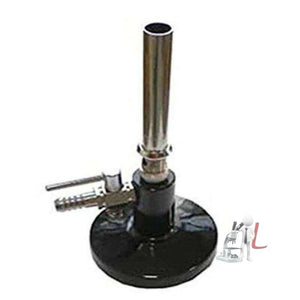
A Bunsen burner is a staple in any laboratory. It is a gas burner used for heating, sterilizing, and combustion purposes. By adjusting the air and gas flow, scientists can control the intensity of the flame. Bunsen burners are commonly used in experiments that require heating substances or sterilizing equipment.
How Does a Microscope Work and What Can it Reveal?
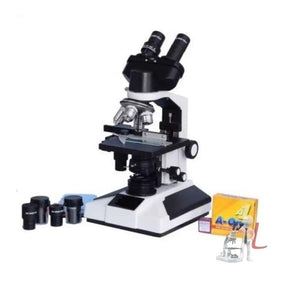
A microscope is an essential tool for magnifying and observing tiny objects that are otherwise invisible to the naked eye. It works by using lenses to bend light and create an enlarged image. Microscopes are used in various scientific fields, such as biology and chemistry, to study cells, microorganisms, and other minute structures.
What is the Purpose of a Centrifuge in a Laboratory?
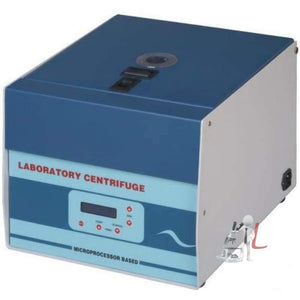
A centrifuge is a device used to separate substances of different densities by spinning them at high speeds. It utilizes centrifugal force to separate components such as liquids and solids. Centrifuges are commonly used in medical laboratories to separate blood components, in chemistry labs for purification purposes, and in research facilities for various scientific studies.
How Does a Spectrophotometer Measure Light?

A spectrophotometer is an instrument used to measure the intensity of light at different wavelengths. It works by passing light through a sample and measuring the amount of light absorbed or transmitted. Spectrophotometers are widely used in chemistry and biology to analyze the concentration of substances, identify unknown compounds, and study the interaction of light with matter.
What is the Role of a Fume Hood in Laboratory Safety?

A fume hood is a ventilated enclosure used to safely handle hazardous or toxic substances. It works by drawing air away from the user and expelling it outside the laboratory, preventing the inhalation of harmful fumes. Fume hoods are essential for maintaining a safe working environment in laboratories where volatile chemicals or gases are used.
Why are Pipettes Essential Tools in a Laboratory?
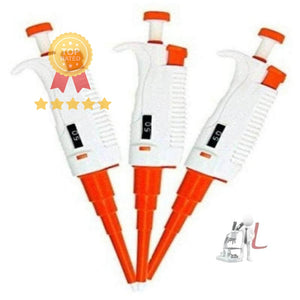
Pipettes are precision instruments used to measure and transfer small volumes of liquid. They come in various forms, such as micropipettes and serological pipettes, and are used in a wide range of scientific applications. Pipettes are crucial for accurately dispensing reagents, preparing samples, and conducting experiments that require precise liquid handling.
These are just a few examples of the many lab equipment and their uses. Each piece of equipment serves a specific purpose and contributes to the advancement of scientific knowledge. By understanding the functions and applications of these tools, scientists can conduct experiments with precision and accuracy, leading to groundbreaking discoveries.
What is laboratory equipment?
Laboratory equipment refers to the various tools and instruments used in scientific research, experimentation, and analysis. These tools are designed to assist scientists, researchers, and technicians in conducting experiments, measuring and analyzing data, and performing various scientific procedures.
Why is laboratory equipment important?
Laboratory equipment plays a crucial role in scientific research and discovery. It enables scientists to gather accurate data, perform precise measurements, and conduct experiments under controlled conditions. Without proper laboratory equipment, it would be challenging to carry out scientific investigations and make scientific advancements.
Common laboratory equipment and their uses
1. Microscope: A microscope is used to magnify small objects or organisms that are not visible to the naked eye. It is widely used in biology, medicine, and other scientific fields to study cells, microorganisms, and tissues.
2. Bunsen burner: A Bunsen burner is a gas burner used for heating, sterilizing, and combustion in the laboratory. It is commonly used in chemistry experiments and various laboratory procedures.
3. Beaker: A beaker is a cylindrical container with a flat bottom and a pouring lip. It is used for mixing, heating, and measuring liquids in the laboratory.
4. Pipette: A pipette is a laboratory tool used to transfer small amounts of liquid accurately. It is commonly used in chemistry, biology, and medical laboratories.
5. Centrifuge: A centrifuge is a machine used to separate substances of different densities using centrifugal force. It is widely used in biology, chemistry, and medical laboratories for separating liquids and solids.
6. pH meter: A pH meter is used to measure the acidity or alkalinity of a solution. It is an essential tool in chemistry, biology, and environmental science.
7. Incubator: An incubator is a device used to provide controlled conditions for the growth and development of organisms or cells. It is commonly used in microbiology and cell culture laboratories.
8. Spectrophotometer: A spectrophotometer is an instrument used to measure the intensity of light absorbed or transmitted by a sample. It is widely used in chemistry, biochemistry, and molecular biology for quantitative analysis.
Conclusion
Laboratory equipment is vital for scientific research and experimentation. It enables scientists to conduct accurate measurements, perform experiments, and analyze data. The wide range of laboratory equipment available serves various purposes and plays a crucial role in advancing scientific knowledge and understanding.
Top Suppliers
Collections
- Dairy products
- Milk Testing Equipment
- physics lab
- Laboratory And Scientific Equi...
- microscopes
- ENT AND OPHTHALMIC
- measuring tools
- Centrifuge machine
- Micrometer
- Micropipette
- Silica Gel
- BOTANY PERMANENT MICRO-PREPARE...
- PERMANENT SLIDES
- centrifuge machine
- mask - type of mask
- medical products
- bod incubator
- Lab Chemical
- Do meter
- Lab Fabric items
- dental Autoclave
- medical mannequin
- White PVC Plastic Human Skelet...
- Human Body Part Models
- Heart Models
- Knee Joint Model
- Skull Models
- Laboratory Centrifuge
- Handi Centrifuges
- Microcentrifuge
- Table Top Centrifuge
- Digital Centrifuge Machine
- Pusher Centrifuge
- Laboratory Consumables
- Melting Point Apparatus
- Soxhlet Extraction Apparatus
- Distilling Apparatus
- Chemistry Lab Apparatus
- Chromatography Apparatus
- Diffusion Cell Apparatus
- Flash Point Apparatus
- Science Laboratory Equipment
- Profile Projectors
- Engineering Laboratory Equipme...
- Types of Microscopes
- General Laboratory Equipment
- Heating & Cooling Products
- Hospital equipment
- Testing Equipment
- Clean Air Equipment
- Engineering & Institute labora...
- HEAT & MASS TRANSFER LAB
- REFRIGERATION & AIR CONDITIONI...
- I.C. ENGINE LAB
- FLUID MECHANICS AND MACHINERY ...
- STRENGTH OF MATERIALS LAB
- EDM LAB equipment
- MATERIAL SCIENCE LAB
- FMS LAB
- CAD LAB
- AUTOMOBILE LAB
- MEASUREMENT & METROLOGY LAB
- DYNAMICS OF MACHINES LAB
- CENTRAL WORKSHOP
- Aerospace Engineering lab Equi...
- Biological Sciences lab Equipm...
- Chemical Engineering Equipment
- Civil Engineering
- Mechanical Engineering
- School And College University ...
- Lab Glassware & Chemical Items
- Zoology Lab Equipment
- Microbiology laboratory equipm...
- Chemistry Lab Products
- Botany Lab Product
- Biological Lab Equipment
- Department Of Anatomy Lab Equi...
- College of Nursing Lab Equipme...
- Endocrinology, Metabolism & Di...
- Haematology Lab Equipment
- Orthopaedics lab equipment
- Pediatric lab equipment
- Pathology lab equipment
- Physiology lab equipment
- Rheumatology lab equipment
- Urology lab equipment
- Obstetrics and Gynaecology lab...
- Otorhinolaryngology lab equipm...
- Pharmacology lab equipment
- Anatomy lab equipment
- Research Section lab equipment
- Pharmaceutical & Research Lab ...
- Physical Pharmacy Lab equipmen...
- Pharma Biology Laboratory Lab ...
- General Laboratory Equipment
- School And College University ...
- Medical College Lab equipment
- Biomedical Engineering Lab Equ...
- Biostatistics Lab Equipment
- Cardiology Lab Equipment
- College of Nursing Lab Equipme...
- Gastroenterology and Human Nut...
- Gastroenterology and Human Nut...
- Nursing Department lab equipme...
- Paediatrics lab equipment
- Reproductive Biology lab equip...
- Rheumatology lab equipment
- Biochemistry lab equipment
- Biophysics lab equipment
- Biotechnology lab equipment
- Centre for Community Medicine ...
- Nephrology lab equipment
- Pharmaceutical Chemistry Lab E...
- Microbiology & Pharmacology La...
- D Pharmacy equipment
- B pharmacy Equipments
- Pharmaceutics Laboratory Equip...
- Pharma Analysis Laboratory Equ...
- Animal House lab Equipment
- Pharmacognosy Laboratory Equip...
- Pharmacy laboratories equipmen...
- DEPARTMENT OF PHARMACOLOGY Equ...
- DEPARTMENT OF PHARMACOGNOSY Eq...
- DEPARTMENT OF P'CEUTICAL CHEMI...
- DEPARTMENT OF P'CEUTICS Equipm...
- PHARMACEUTICAL BIOTECHNOLOGY E...
- Livestock & Production Managem...
- Veterinary Sciences Lab Produc...
- Live Stock & Production Manage...
- Genetics and Plant Breeding la...
- Biotechnology lab equipment
- Seed Technology Lab Equipment
- Genetics and Plant Breeding la...
- Biotechnology
- Seed Technology
- Soil Science & Soil Water Cons...
- Entomology Lab equipment
- Agronomy Lab Equipment
- Metrological Lab Equipment
- Plant Pathology & Microbiology...
- Dental Equipment
- Microbiological Diagnostic Equ...
- Industrial & Soil Equipment
- Accessories
- Mega Offer
- Offer Zone
- Tiles Ceramic Laboratory Equip...
- analytical lab Equipment
- ayurvedic drug testing laborat...
- ayurvedic pharmacy instruments
- herbal testing laboratory
- mushroom lab Equipment
- lab plasticware
- agriculture Lab Equipment
- Agriculture College Lab Equipm...
- Labpro Banner 60%
- Labpro banner
- physics 60% Discount
- Hospital equipment supplier Ne...
Top Suppliers
Blog Posts
- green laser Light...
- Student Stereo Mi...
- Binocular Microsc...
- Laboratory Equipm...
- Prokaryos lab and...
- Pharmacy Lab
- Micro lab Laminar...
- MILK TESTING EQUI...
- Micrometer
- Centrifuge Machin...
- Chemistry Lab Equ...
- Agricultural coll...
- full body sanitiz...
- hydrometer for wi...
- Portable Bottle f...
- Egg Incubator
- Laboratorydeal of...
- A complete list o...
- different types o...
- Uses of Microscop...
- Tags: 10 laboratory apparatus 10 laboratory apparatus and their uses 10 laboratory equipment 2nd hand lab equipment agriculture lab equipment list all chemistry lab equipment names and pictures all lab equipment all lab equipment names and pictures all lab instruments all laboratory apparatus all laboratory equipment apparatus used in chemistry lab apparatus used in chemistry laboratory apparatus used in laboratory basic chemistry lab equipment basic lab equipment basic laboratory apparatus best laboratory equipment companies best place to sell used lab equipment bio lab equipment biological equipment biological instruments biological laboratory equipment biology lab equipment biology lab equipment list biology lab equipment names biology lab equipment price list biology lab materials biotech lab equipment blood test equipment list blood test equipment price blood test lab equipment blood test machine price buy lab equipment buy lab glassware buy laboratory equipment online buy used lab equipment cheap chemistry glassware cheap lab equipment cheap lab glassware chem lab equipment chem lab equipment names chem lab suppliers chemical apparatus and their uses chemical equipment list chemical lab equipment chemical lab equipment names chemical laboratory apparatus chemical laboratory equipment chemical laboratory instruments chemistry apparatus chemistry apparatus and their uses chemistry devices chemistry equipment chemistry equipment list chemistry equipment shop near me chemistry experiment equipment chemistry gear chemistry instruments chemistry items chemistry lab accessories chemistry lab apparatus chemistry lab apparatus and their uses chemistry lab equipment chemistry lab equipment buy online chemistry lab equipment for sale chemistry lab equipment glassware chemistry lab equipment list chemistry lab equipment list with pictures chemistry lab equipment names chemistry lab equipment names and pictures chemistry lab equipment near me chemistry lab equipment price list chemistry lab equipment shop chemistry lab equipment shop near me chemistry lab equipment with pictures chemistry lab glass equipment chemistry lab instruments chemistry lab materials chemistry lab supplies chemistry lab supply store near me chemistry lab tools chemistry laboratory chemistry laboratory apparatus chemistry laboratory apparatus and their uses chemistry laboratory equipment chemistry laboratory equipment list chemistry laboratory instruments chemistry supplies chemistry supplies near me chemistry supply store chemistry supply store near me chemistry tools chemistry tools and equipment chemistry tools in lab chemistry tools list clinical lab equipment list consumable lab supplies different laboratory apparatus equipment used in chemistry lab experiment equipment fisher lab supplies fisher scientific lab supplies food lab equipment general lab equipment general lab supply general laboratory equipment glass lab equipment glass lab equipment names glass laboratory equipment hospital lab equipment list instrument in laboratory instrument lab instruments laboratory instruments used in chemistry lab instruments used in laboratory lab accessories lab apparatus lab apparatus and their uses lab apparatus list lab chemical suppliers lab chemical suppliers near me lab consumables lab consumables list lab consumables suppliers lab equipment lab equipment and their uses lab equipment and uses lab equipment co lab equipment companies lab equipment cost lab equipment distributor lab equipment distributors in usa lab equipment for sale lab equipment glassware lab equipment list lab equipment manufacturers lab equipment manufacturers in india lab equipment names lab equipment names and pictures lab equipment names and pictures and uses lab equipment names and uses lab equipment near me. lab equipment near me. laboratory equipment lab equipment parts lab equipment price list lab equipment service lab equipment shop near me lab equipment store lab equipment suppliers lab equipment suppliers in india lab equipment suppliers near me lab equipment website lab glassware near me lab glassware shop near me lab glassware suppliers lab instruments lab instruments list lab instruments shop near me lab items lab machine price lab machinery lab maintenance lab material list lab material name lab material shop near me lab materials lab measuring equipment lab objects lab product lab safety equipment lab safety supply lab stuff lab supplies lab supplies near me lab supplies online lab supplies scientific lab supply company lab supply distributors lab supply shop lab supply store lab supply store near me lab testing equipment lab testing equipment list lab testing equipment suppliers lab tools lab tools and equipment lab usa lab utensils laboratory accessories laboratory apparatus laboratory apparatus and equipment laboratory apparatus and their uses laboratory apparatus and their uses with pictures laboratory appliances laboratory chemical suppliers laboratory consumables laboratory consumables and chemical supplies laboratory device laboratory equipment laboratory equipment and instruments laboratory equipment company laboratory equipment for sale laboratory equipment glassware laboratory equipment list laboratory equipment list and their uses laboratory equipment list with pictures laboratory equipment manufacturer laboratory equipment near me laboratory equipment price laboratory equipment services laboratory equipment stores near me laboratory equipment suppliers laboratory equipments and their uses laboratory glassware and equipment laboratory glassware suppliers laboratory glassware suppliers near me laboratory instruments laboratory instruments list laboratory items laboratory lab laboratory machine laboratory machine price in india laboratory maintenance laboratory materials laboratory materials and equipment laboratory parts laboratory product laboratory products list laboratory products online laboratory props laboratory shop near me laboratory stuff laboratory supplies laboratory supplies and equipment laboratory supplies near me laboratory supply store laboratory supply store near me laboratory testing equipment laboratory things laboratory tools laboratory tools and equipment list of laboratory apparatus machines used in chemistry lab mechanical lab equipment medical and lab supplies medical and laboratory equipment medical lab equipment medical lab equipment list medical lab equipment suppliers medical lab instruments medical lab supplies medical laboratory apparatus medical laboratory consumables medical laboratory equipment medical laboratory equipment list medical laboratory equipment list and their uses medical laboratory equipment price list medical laboratory instruments medical laboratory machines medical laboratory supplies mini laboratory equipment name of laboratory equipment new lab equipment old lab equipment old lab equipment for sale pathology equipment pathology equipment price pathology lab equipment pathology lab equipment list pathology lab equipment list with price pathology lab equipment price list pathology lab instruments pathology lab machine price pathology laboratory equipment pathology machine pathology machine price pathology products physics lab equipment physics lab equipment for schools physics lab equipment price list physics lab equipment shop near me physics lab equipment suppliers plastic lab equipment refurbished lab equipment science apparatus science chemistry lab equipment science equipment store near me science equipment suppliers science lab accessories science lab apparatus science lab equipment science lab equipment for schools science lab equipment list science lab equipment names science lab equipment names and pictures science lab equipment price list science lab equipment shop near me science lab instruments science lab materials science lab supplies science lab supplies near me science lab things science lab tools science laboratory apparatus science laboratory equipment science laboratory equipment list science laboratory tools science materials list science shop near me science supplies science supplies near me science supplies store science supply store near me science tools and equipment scientific apparatus scientific equipment scientific equipment shop near me scientific equipment suppliers scientific lab equipment scientific lab equipment manufacturer scientific lab supplies scientific laboratories supplies scientific laboratory equipment scientific store near me scientific supplies scientific supplies near me scientific supply store scientific supply store near me scientific tools list second hand lab equipment second hand lab equipment for sale sell lab equipment sell used lab equipment surplus lab equipment testing equipment list thermo fisher equipment thermo fisher lab equipment things in a lab tools used in laboratory usa lab usa lab equipment used lab used lab equipment used lab equipment for sale used laboratory equipment used laboratory equipment for sale used scientific equipment we buy used lab equipment wholesale lab equipment
















